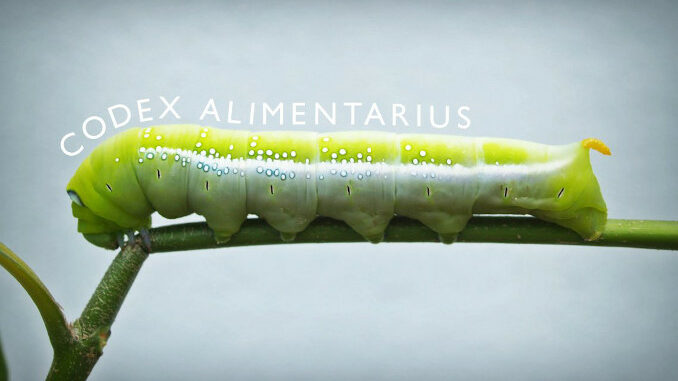
by: Corey Lynn
Few people are aware of who creates the global food “standards” and “guidelines,” and even fewer have a seat at the table with a voice to challenge the toxins, ingredients, and processes working their way into the food system. One of those individuals is Scott Tips, President of the National Health Federation, and we need him and his team now more than ever, before insects, dogs, and rats make it to our grocery stores, and indoor growing facilities backed by the globalists wipe out all of the farmers.
• Codex Alimentarius just introduced a list of of over 90,000 species of insects and spiders to be included as a new food category for human consumption
• While FAO, WHO, Codex, Hollywood, and investors all tout that 2 billion people in the world eat nutritious bugs, they fail to mention the dangers, such as almost a fifth of fatal reactions to foods in China have been due to insect consumption, or how pesticide-contaminated insects in Thailand have caused food poisoning in people
• 92% of edible insects today are harvested from the pesticide-ridden wild, while farm raised insects could be prone to gene editing
• The edible insect market is expected to grow from $1 billion in 2019 to $8 billion in 2030
• The North American market is predicted to grow 28% by 2023 – more than any other region
• As if insects weren’t bad enough, Codex also recently introduced rats, dogs, opossum, dolphins, whales, and other species as another “meat” food
• The National Health Federation is the only organization allowed a seat at the table in Codex meetings to argue on behalf of people for the protection of their health
Codex Alimentarius in a Toxic Nutshell
“Of the two, I mean, it’s sort of like a choice between Hitler and Muscelini. FAO is kind of the Mussolini and WHO is the Hitler.” – Scott Tips, President of The National Health Federation
Codex Alimentarius was established in 1963 by the Food and Agriculture Organization and the WHO, both of which have full immunity and privileges, as covered in Corey’s Digs report on Laundering with Immunity: The Control Framework Part 1. Codex was established for the sole purpose of setting the standards and guidelines for all food that is consumed by human beings. They do not have the authority to make laws, so the 189 country members, 20 of which are heads of the various committees, take these “standards” and create regulations and laws in their respective country. The USDA, for example, is a driving force for not only adhering to the standards, but making certain other countries follow in lock step as well.
The WHO’s 2022-2030 Global Food Strategy makes clear that they intend to bring rise to new technologies and a digital transformation. Here are just a few things they have in store:
“Novel plant and animal breeding methods involving genetic editing offer the potential for developing species with new traits, such as disease resistance and drought tolerance. Nanotechnology applications in the food sector can lead to improvements in nutrients, bioactive delivery systems … which can extend shelf-life of foods. Alternative food proteins such as meat, egg, fishery or dairy products that are plant-based, cultivated or fermentation-derived and other new food sources, including food product reformulation, can improve consumer options and sustainability. However, new technologies for food production must be fully assessed from a public health point of view before products are placed on the market. In this regard, the Codex Alimentarius will play a key role.
Digital innovation and transformation in the context of big data and analytics, artificial intelligence and the internet of things (IoT) are trends that are rapidly changing food systems. For example, genomics and related tools – such as whole genome or next generation sequencing and international sharing of data relevant to food born diseases – enable more precise … source tracking.”
Codex’s Secretariat is based in Rome. They have a commission, executive committee, and 20 main committees pertaining to the food and agriculture industry. The US heads the ‘Food Hygiene’ committee, Canada heads ‘Food Labeling’, Germany heads ‘Nutrition and Foods for Special Dietary Uses’, Mexico heads ‘Fruits and Vegetables’, and China is the only country to head up two committees, which are the ‘Food Additives’ and ‘Pesticide Residues’, just as a few examples. See the chart below and visit Codex to review the full breakdown.
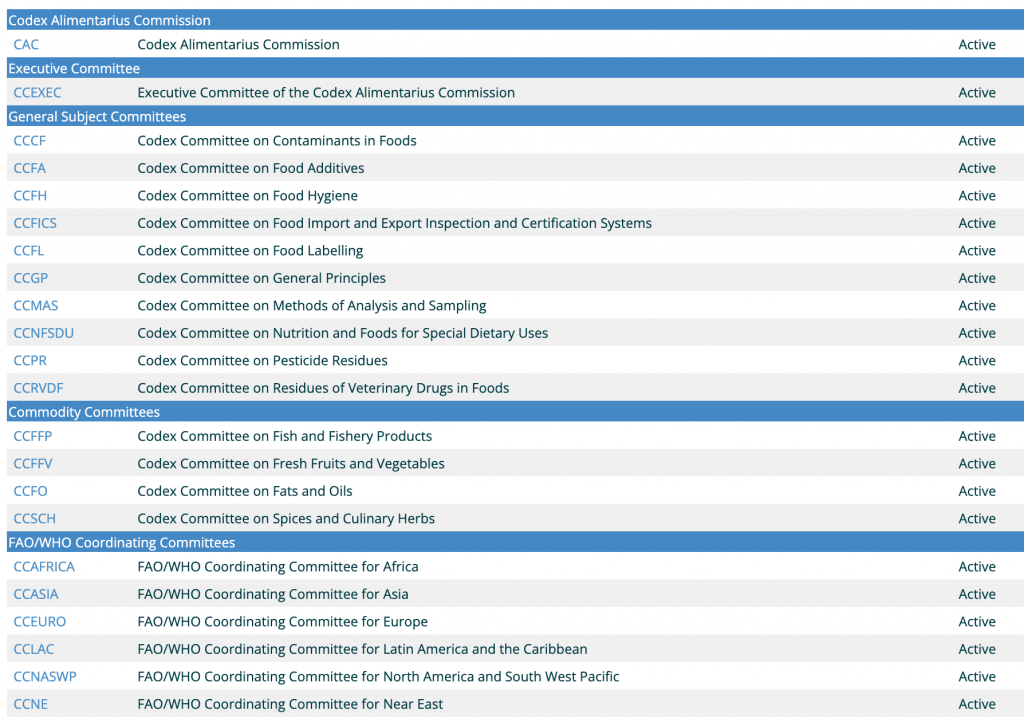
Meet The Man and His Team Who Are Fighting for You

“It was the best thing that ever happened, because now instead of being muzzled, we had a microphone just as the U.S. did. We could submit written documents just the same as they did. We could go and talk to other delegations and lobby them for positions against the US position, or anyone’s position, and so it was great, but it wasn’t all a bed of roses. Five years later, they tried to kick us out … but by then I had cultivated a lot of good contacts in the Codex Secretariat’s office … I said, it’s better to have us inside the tent than outside causing trouble for you, and you look better because it looks like you’re an all inclusive umbrella. They haven’t tried to kick us out since,” said Scott Tips in regards to getting accredited to participate in Codex meetings.
In my discussion with Scott Tips, we delve into the structure of how Codex operates, how various countries play a role, what corporations are in attendance such as Bayer/Monsanto and Merck, NHF’s accomplishments in getting some ingredients banned as well as their ongoing battles, and what people can do to raise awareness and fight against Codex. It is absolutely a must listen to because all decisions on everything that goes in your mouth (except for medications), starts here. This is ground zero.
Listen to Scott Tips and Corey Lynn’s discussion here:
My conversation with Tips preceded the more recent news he published regarding the fact that insects, dogs, rats, and other critters had officially been introduced at a Codex meeting. This gives a whole new meaning to a “doggy bag.” That critical information is documented below.
In 1986, Scott Tips became a member of the The National Health Federation (NHF), and by 1989 had become a member of the Board as well as their attorney. In 2007, Tips was elected President and has continued on this path ever since. He is very active in attending Codex meetings and others with NHF attend some as well.
In 2002, NHF became an accredited organization, after three attempts, to attend, raise questions, and speak at Codex committee meetings, on behalf of citizens. Til this day, they are the only organization fighting for people that are allowed into these meetings, which is why it is so important to become a member of NHF and stay up-to-date on new “standards” being implemented by Codex, current battles NHF is fighting and how you can help, and to support the only organization fighting for citizens of the world at ground zero against some of these alarming “rules.” Also consider donating to NHF to help them continue this incredibly necessary work.
Tips advises of three main things that people can do:
• Petition the Codex office in your country
• Write your congress and get them to lean on the Codex office
• Get member states to withdraw from Codex
Currently on The Table at Codex: Insects, Dogs, Rats, Opossum, Swans, and More!

When the globalists start using Hollywood to push out agendas, it’s only a matter of time before it moves through policies in big Gov. Nicole Kidman is one of their favorite poster childs to use in such cases. In 2018, Vanity Fair rolled a video of Kidman eating several different kinds of bugs, while declaring how delicious they were. Quite a list of Hollywood actors have agreed to “act” as though eating insects is cool. This of course came after World Economic Forum’s landmark report on ‘Could insect farms meet our food demands of the future?‘ and later ‘Good grub: why we might be eating insects soon.’ Globalist private investors haven taken the charge of populating media outlets and encouraging people that by eating insects they will be saving the planet, in yet another climate change rouse.
In July 2022, a new food category under “meat” was presented at the 53rd session of the Codex Committee on Pesticide Residues meeting, with over 360 in attendance. The new “meat” items they would like to add, include:
• Dogs
• Rats
• Opossums
• Capybaras
• Kangaroos
• Wallabies
• Swans
• Lizards
• Dolphins
• Whales
As Scott Tips reported, in that same document, introduced by Sophie Brouwer of the Netherlands, it also revealed insect food categories, while assuring everyone that “several stages of the insects and spiders can be consumed: eggs, caterpillars, puppets and adult … The entire commodity may be consumed.”
Meal worms, crickets, and grasshoppers are just the appetizer. Earwigs, lice, beetles, and dragonflies, make for a delicious dessert. But why stop there, when they can distinguish the butterflies and the bees too? Who doesn’t want to eat bees over having them pollinate their plants or enjoying the honey they produce? In the U.S., there are 91,000 described species. Bees fall under the Hymenoptera category, along with ants and wasps, accounting for 17,500 species in the U.S. How about digesting some ticks or bed bugs, anyone? There are 23,700 Coleoptera (beetles) in the U.S., 19,600 Diptera (flies), and 11,500 Lepidoptera (moths and butterflies). Codex suggests these main four categories that are found in the U.S., along with numerous others, in the chart below, which doesn’t even include the complete list, so it’s safe to say that all 91,000 species are recommended for consumption.
It makes sense, doesn’t it? Let’s remove CO2 to deplete all plant life, have people swallow up all of the insects and spiders that maintain the ecosystem, prevent all livestock production and replace it with synthetic meat while also removing dairy, and drill into the oceans for minerals while extracting all of the whales and dolphins. Chew on that for a bit, while snacking on some rats and earwigs.
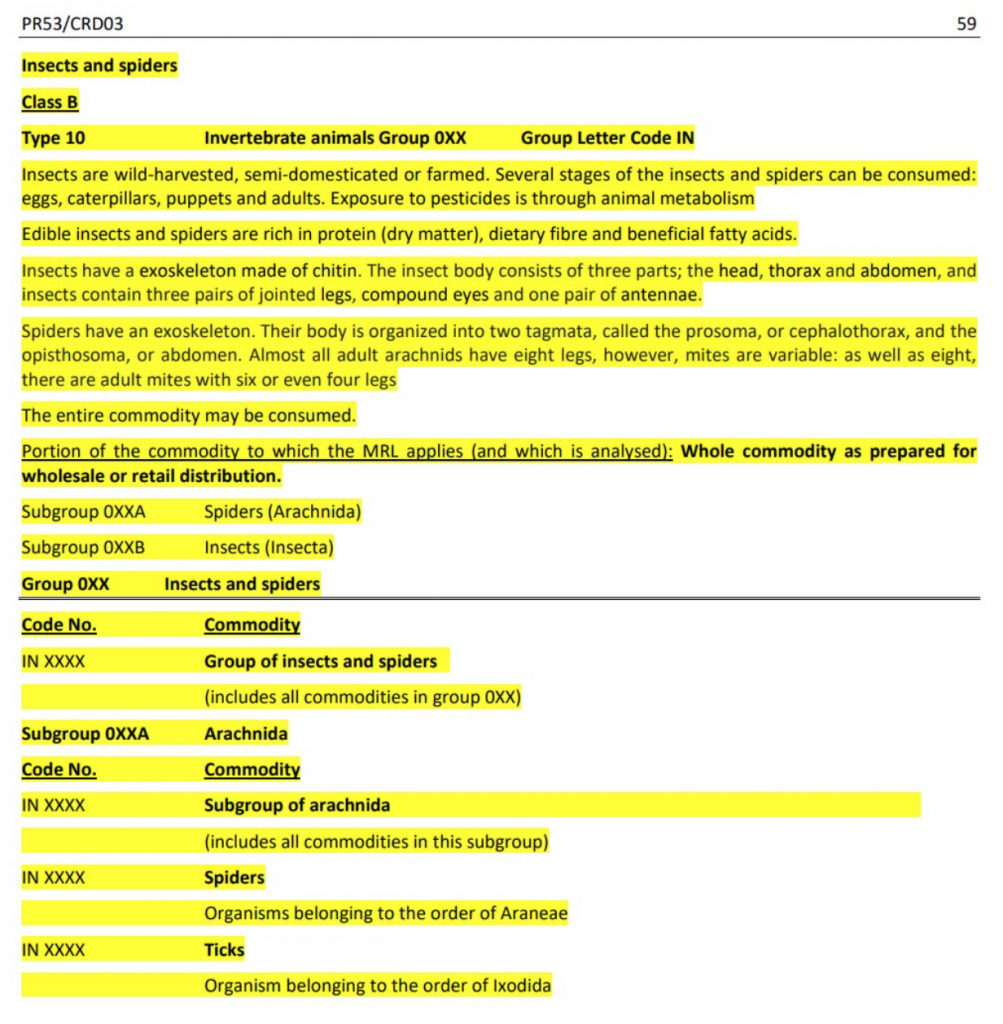
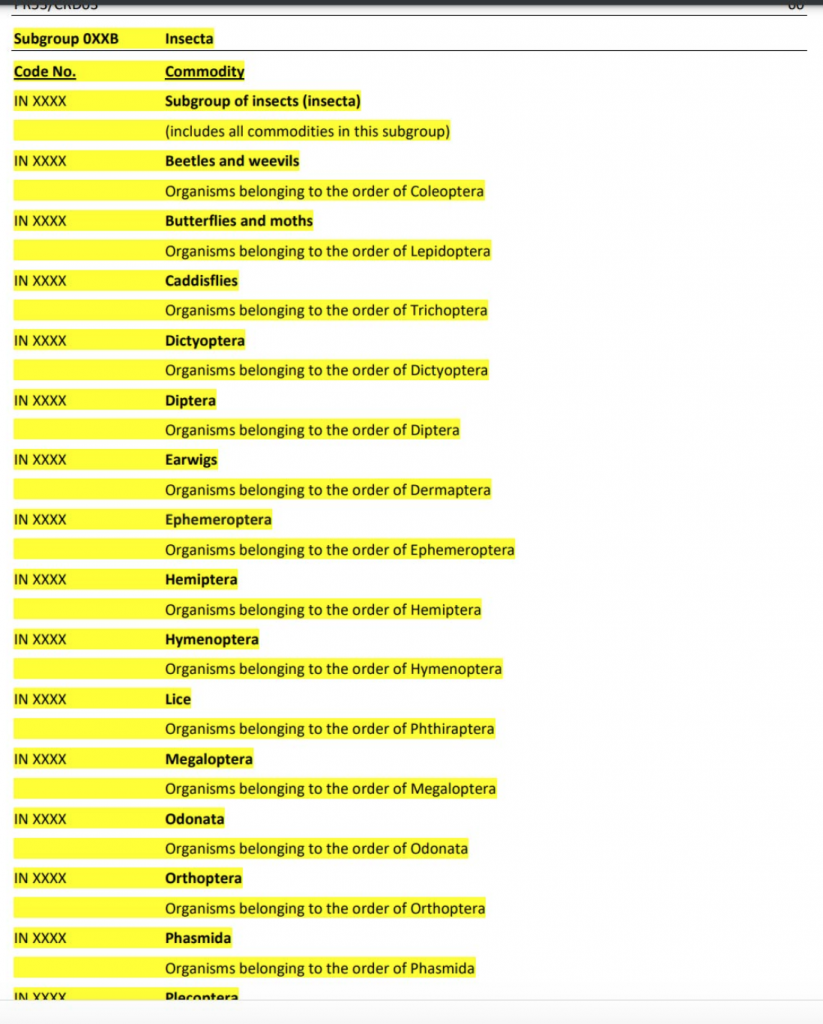
This is no joking matter. Once it hits the table at Codex, that means countries have every intention of making this a reality. NHF objected to dolphin and whale meat, and intend to object to a large number of other so-called food categories as well.
Pathogens, Pesticides, and Parasites – Yum!
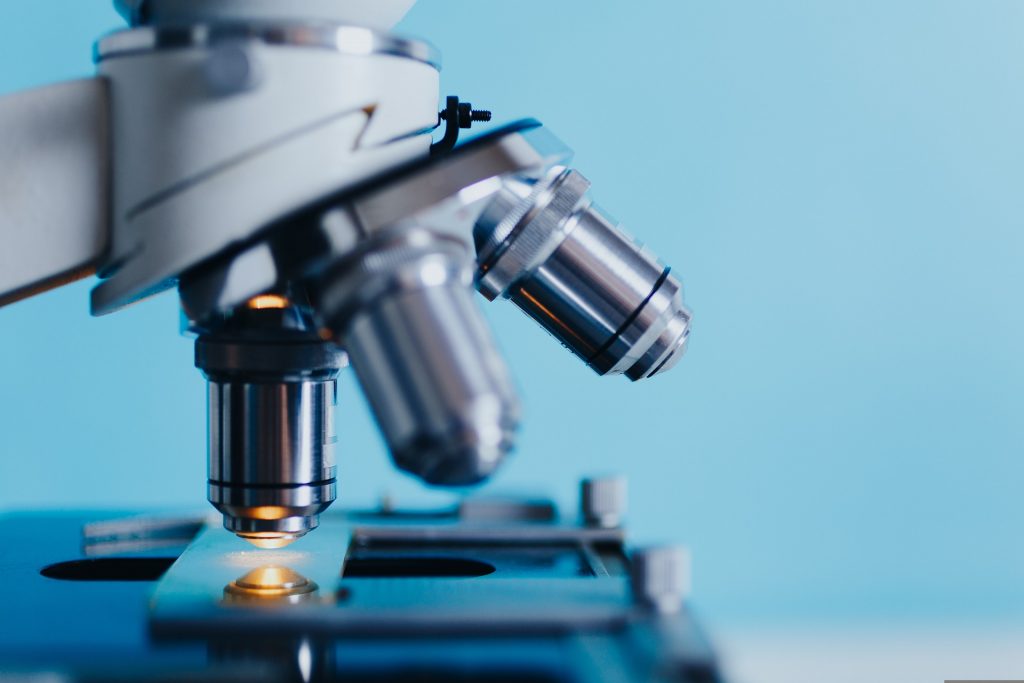
Whereas FAO would have everyone believe that eating insects will be safe and nutritious because of regulating the general processing and online trade of edible insects, there are some major concerns and studies that prove otherwise.
In FAO’s 201-page 2013 paper on ‘Edible insects: future prospects for food and feed security’, they want to be sure people understand how this helps save the environment, is far more sustainable, and can feed people all over the world. Just think of how much land they will save for themselves while removing all livestock to “conserve” on land that is plentiful, replaced with indoor insect growing farms, and vertical indoor facilities growing gene-edited produce.
We’ve all seen the damage PESTicides have caused, but how much damage and potential DNA changes or mutations has it caused in insects and spiders over the decades, and how has that translated to health issues in humans through bug bites or consumption?
Harvard points out that “insect-killing chemicals have been linked to impaired fertility in women and men, reduced sperm count and quality, miscarriage, premature birth, stillbirth, birth defects, low birth weight, and developmental disorders.” Gosh, is that all? Of course, they are reporting on this under the guise of “climate change” to justify the need to reduce the globalists $85+ billion dollar pesticide industry, only for the fact that they want to shift into the indoor growing industry controlled by the globalists – which doesn’t require pesticides. Only now, are they truly “concerned” about this.
It’s ironic that they bring up DDT (dichloro-diphenyl-trichloroethane), stating that it’s inescapable and will persist in the environment for decades, which was coincidentally perfected by the Rockefellers by developing a “speed-up method of applying white DDT powder through use of machine dusters or pumpers” – like a giant film of sterilization.

After nearly two decades of poisoning people, the U.S. Department of Agriculture prohibited many of DDT’s uses because of its toxicological effects, and it wasn’t until 1972 that the EPA issued a cancellation order for DDT due to its adverse effects on the environment, wildlife, and humans. Studies showed that DDT exposure resulted in reproductive issues and animals developed liver tumors.
Despite the fact that they classified DDT as a probable human carcinogen that is known to be very persistent in the environment, accumulates in fatty tissues, and can travel long distances in the upper atmosphere, DDT is still used til this day. In 1996, the EPA joined with the UN and member countries to decide it should be banned with exception of use to control mosquitoes that can cause Malaria, such as in African countries, and the WHO supports indoor use of it, claiming the health risks from DDT don’t measure up to the health risks of Malaria.
And yet, while this sterilization of mankind continues, there are still dozens of CropLife staff attending Codex meetings on behalf of Monsanto/Bayer to ensure that all of their toxic chemicals continue to see the light of day.
After all of this, consider this statement on the document submitted to Codex (above), once again: “Insects are wild-harvested, semi-domesticated or farmed. Several stages of the insects and spider can be consumed: eggs, caterpillars, puppets and adults. Exposure to pesticides is through animal metabolism.”
Is it any wonder why the U.S. hit a historic 80-year low in less births and men’s sperm has declined by 50%? As if the eugenicists sterilizing 60,000 Americans in the early to mid 1900s wasn’t enough, surely DDT in the 1940s and onward, took care of thousands more, and vaccines and abortions carried the rest. And just last week, Planned Parenthood announced their new 37-foot abortion clinic on wheels that will be traveling around the outskirts of states who have put restrictions on abortions, kicking off their adventure in Illinois.
Studies Reveal The Dangers of Eating Insects
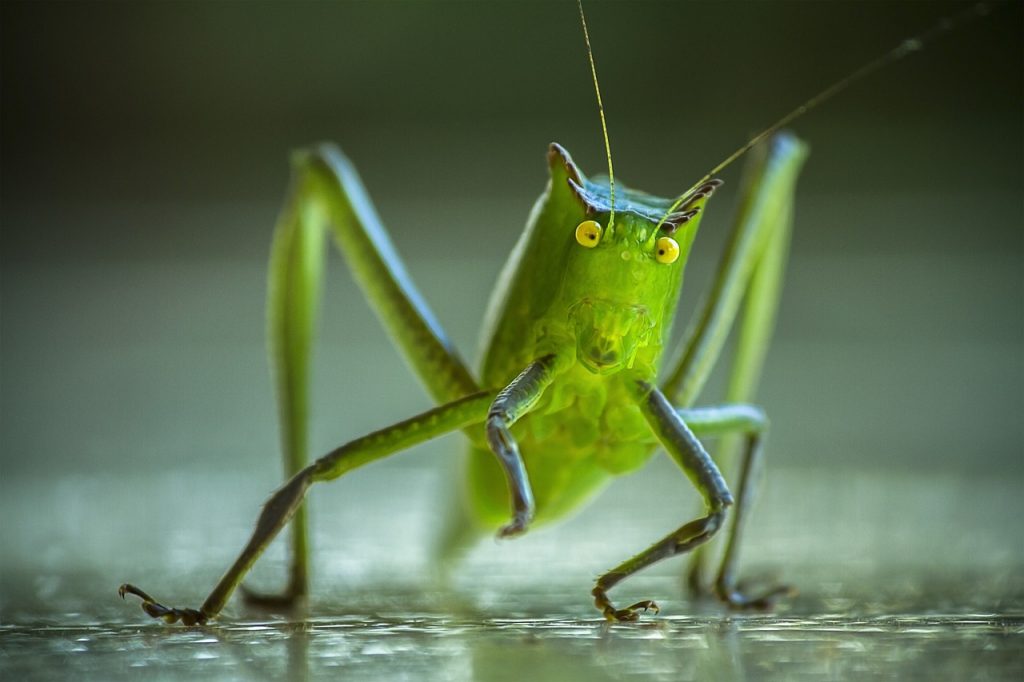
In the Journal of Future Foods, the abstract on ‘Edible insects as future food: chances and challenges‘, would appear to lean toward insects as a beneficial new feed supply for humans, stating “Advantages of entomophagy include a high feed-conversion efficiency of insects and the rearing on organic side streams, adding value to waste and decreasing environmental contamination. Compared to cattle raising, insects emit relatively few greenhouse gases and little ammonia and require significantly less land and water.”
Yet, they go on to state that “Foods derived from wild harvested edible insects are prone to the presence of pesticide residues, since wild insects may feed on crops or vegetation contaminated with pesticides.” They list two examples of massive spraying in East African countries causing adverse impacts, and how pesticide-contaminated insects in Thailand have caused food poisoning in people consuming insects. According to a study that Harvard shared, 92% of insects eaten today are harvested from the wild. Despite the obvious, the document submitted to Codex includes “wild-harvested insects.”
They also bring up concerns about food allergens evoking adverse immune responses, especially since their are specific proteins in insects that are considered allergens, particularly in crickets and meal worms. They report that almost a fifth of fatal reactions to foods in China have been due to insect consumption. So while Hollywood, FAO, and the WHO continue to promote that “two billion people in the world eat insects,” they fail to mention how many die from it, become ill, or are malnutritioned. How convenient.
The list of pathogenic microorganisms found is insects is too long to list. There have already been reports of foodborne infections and intoxications that were caused by pathogenic microbes during insect consumption. Mycotoxins and aflatoxins, a proven carcinogen, are also of great concern. Additionally, some insects contain anti-nutrients which inhibit intake, digestion, and absorption, but the Codex document insists all of these insects are incredibly nutritious. Heavy metals are also found in some insects. They also suggest that parasites can be an issue, as they can transmit parasitic foodborne diseases.
In a 2007 study, UCSF scientists reported that chitin, the exoskeleton of insects, causes airway inflammation, allergies, and potentially asthma. Insects and parasitic worms are common sources of allergies and produce billions of tons of chitin each year. Shellfish processing has been a major issue that they refer to as “crab asthma,” due to chitin as well.
Whereas, humans have an enzyme that helps to break down the chitin, not everyone is able to do so effectively. Interestingly, the highest childhood asthma risk is associated with the lowest exposure to bacteria, based on studies. They argue that because bacteria is known to degrade chitin, and there has been a massive scale down of bacteria due to modern society cleaning up living conditions, it may actually lead to an increase of chitin in the environment. They also note that asthma is becoming a major issue, especially with children.
Remember when “scientific experts” at the CDC and the Covid Task Force told the country to sterilize everything, constantly wash ones hands, and wear a mask – and the world cried out saying that reducing that much exposure to bacteria will kill us all? How do you create respiratory issues in a population during a time they want everyone convinced that they need to get a jab to evade a respiratory virus?
In a 2018 study on NIH, they explain that chitin is sensed primarily in the lungs or gut and induces cytokine production, leukocyte recruitment, and alternative macrophage activation. This particular study was focused on how ones immune system responds to chitin, explaining how it causes inflammation in the lungs, but also how they might utilize chitin and its derivative chitosan to benefit people due to its antimicrobial properties. A 2021 study shows how chitin and chitosan could be used as tools to combat Covid-19.
It should be noted that chitin and chitosan is already being used in biomedicine and biotechnology, including being used as an enzyme immobilizer in the food industry, as an anticancer agent, in wound dressings and sutures, for tissue engineering, and cancer diagnosis.
The 2018 study states that there are many aspects of chitin-immune system interactions that have not been thoroughly understood yet, that each chitin source differs from another and must be studied, and that the avoidance of chitin exposure needs to be investigated.
The fact is, there have been a limited amount of studies on the consumption of insects, and only over the past several years have they began publishing more so, to push this agenda. Most of the studies provide reasons as to why insects should be a new food source as opposed to cattle who take up far more land and water supply, under the guise of climate change, while not providing any scientific data on the potential dangers, other than to say the harvesting, rearing, and processing should be done safely in farm-raised environments. The only data they include are percentages on land and water use, cattle emissions, and some of the nutritional value found in insects, while all parroting the same statement about 2 billion people in the world (primarily in Africa and Asia, and is likely a highly inflated number) have been eating bugs for years, as though to suggest that makes it safe. Yet, they do not provide a list of those species that were allegedly safe, nor do they point out the number of people who have been poisoned, fell ill, or died from ingesting insects, or clinical studies to show the harm or safety from consumption of each species. It’s like reading an article on Bill Gates Notes.
The document presented to Codex lists hundreds of thousands of insects and spiders that can be eaten at all stages. It’s incredible. In fact, it’s reminiscent of the Covid jab being “safe and effective,” touted by many of the same people pushing the insects.
Will The Insects and Animals be Gene-edited?
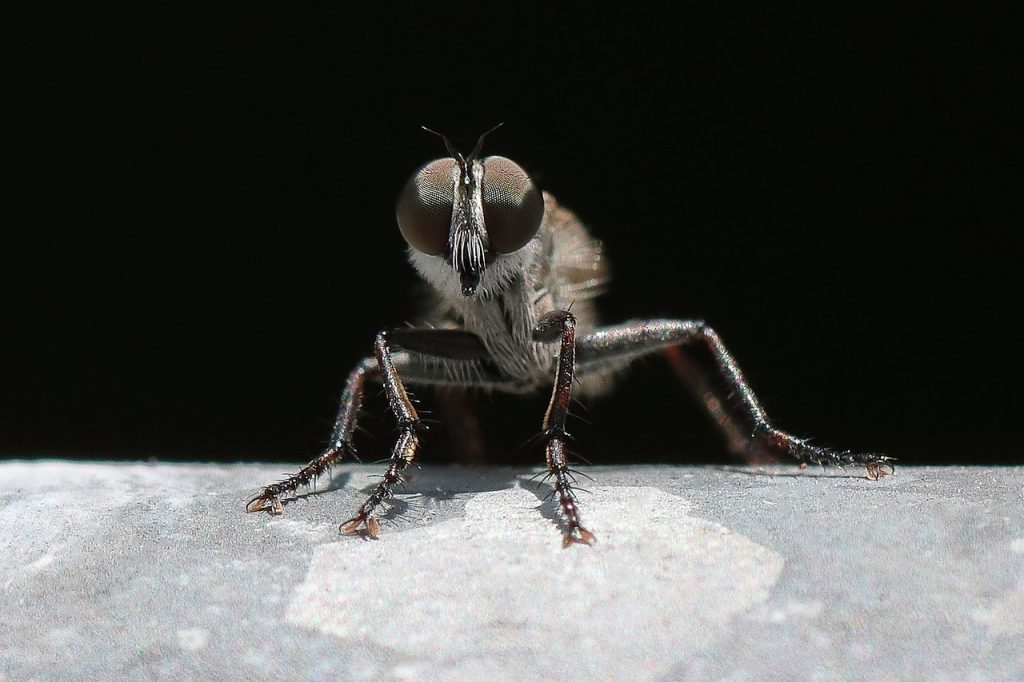
In addition to the potential allergens, inflammatory issues, carry over from pesticides causing reproductive issues, pathogens, and other dangerous health risks from consuming insects, who believes for one moment that any “regulated farm raised insects” are going to be any safer, when Bill Gates funded ventures has already mastered the production of gene-edited mosquitos that wipe out each other’s reproductive systems to reduce the mosquito population. The World Mosquito program has already deployed the little buggers in 11 countries, with scale-up plans across the world. Oxitec released 150,000 mosquitoes in six Florida locations just last year.
It’s hard to imagine this isn’t a precursor to the future of gene-edited bugs served up at every grocery store, especially with the need to farm-raise them. That’s not to say that by altering a bug to not reproduce, it will alter the human who consumes it or is bitten by it to become infertile, but it certainly raises concerns as to what modifications can be done to bugs that might impact humans.
Coincidentally, two months ago they succeeded with gene-edited cockroaches for the first time, and now believe that it will work on more than a million other insect species too.
“We can now edit insect genomes more freely and at will. In principle, this method should work for more than 90% of insect species. In principle, it may be also possible that other arthropods could be genome edited using a similar approach. These include agricultural and medical pests such as mites and ticks, and important fishery resources such as shrimp and crabs,” said senior study author Takaaki Daimon of Kyoto University. Ticks and mites are on the Codex menu, along with thousands of others.
It’s been a big year in gene-editing. They successfully gene-edited two beagle dogs in South Korea from cloned skin cells that had been altered by CRISPR. Previously, in 2018, they restored protein dystrophin in body muscles in dogs via CRISPR, in hopes that they will be able to eventually treat humans. Yes, dogs and rats are also on the Codex menu. They just had success with gene-editing rats this year as well.
Speaking of rats, New Zealand wants to wipe them off the map. In fact, the Predator-Free 2050 agenda wants to wipe out all rats, possums, mustelids, wallabies, and stoats. But wait… aren’t possums and wallabies on the Codex menu? What will people eat? Predator-Free, a so-called grassroots movement, are excited over the possibility of using CRISPR to spread genes through the population of rats that make it hard for them to reproduce, just like what Gates funded Oxitec to do with mosquitoes. With CRISPR, they have the ability to run designer genes through entire groups of animals that will forever change the traits of the entire population in just a few short generations.
Some scientists urge that these gene drives would be detrimental, as it would spread rapidly across entire nations and be irreversible, altering entire ecosystems, while others want the license to kill. Which raises a good point. As countries decide to genetically modify livestock, fish, insects, seeds, and eventually humans, it would be difficult to contain it between countries, especially with the open borders melting pot goal. Imagine how quickly they could alter entire ecosystems, and how others might use it as a weapon. For now, it sounds like the Predator-Free group may run aerial drops of poison while hoping their CRISPR dream comes true one day soon.
The Coalition for Responsible Gene Editing in Agriculture, endorsed by Cargill, the world’s largest poultry producer who is already working with gene-edited seeds for plants, has quite the steering committee comprised of the American Seed Trade Association, BASF, Corteva, Pivot Bio, the World Wildlife Fund, and other actors.
As covered in Corey’s Digs report on indoor produce facilities, there are already over 100 labs in Silicon Valley eagerly working on gene-edited seeds. The FDA has already approved gene-edited salmon, pigs, and cattle and has lax regulations on seeds.
Based on laboratories already setup, new facilities going up, organizations like Cargill and others staking their place in the gene-edited sphere, and the fact that most of the food in the US is already genetically modified, it’s safe to say that within the next decade, all seeds, livestock, lab grown meat, farm grown fish, and even insects will all be gene-edited or completely genetically modified. All ingestibles will be synthetic unless this is stopped.
Investors Are Preying on The Entire Population

The edible insect market is expected to grow from $1 billion in 2019 to $8 billion in 2030. Whereas a lot of investments have gone toward animal feed, they are quickly moving toward human consumption.
Paris company, InnovaFeed, the world’s largest insect production center for animal feed and aquaculture, has recently teamed up with ADM, a $48 billion food giant, to branch out to the U.S. and build a facility in Decatur, Illinois. They’ve raised over $450 million in investments, including Cargill who is also a customer, and commercial partnerships are projected to secure $1 billion over the next 10 years, with the goal to move into human consumption as well. They intend on building 10 sites over the next decade.
“At a time when conservation of our natural resources and the preservation of our environment are becoming an absolute necessity, we are convinced that the insect industry is a key solution for our planet’s food production needs,” InnovaFeed co-founder and CEO Clément Ray said.
They recently appointed Maye Walraven as general manager for North American operations. “Our expansion in the U.S. is a critical step for our scale-up. It will enable us to access a deep source of feedstock and significantly increase our production capacity,” said Walraven. The North American market is expected to grow 28% by 2023, more than any other region.
Smaller companies such as Big Cricket Farms in Ohio, and Cowboy Cricket Farms in Montana, both produce crickets for human consumption. There are a myriad of other companies popping up across the globe.
Whether you are eating them off a plate or consuming them through animals, it seems they are determined to make certain that insects are on the menu.
Whereas the FDA has approved insects in chicken feed, they haven’t yet taken a stance on human consumption of insects. Now that it’s on the table at Codex, it’s only a matter of time before the new “standards” make their way to the FDA, and people not only have to scour food labels for “contains bioengineered food” but also “contains insects,” only they will use words such as “hymenoptera” so people have no clue what the ingredient actually is. Or, perhaps it will simply fall under “artificial flavors.”
Keep it Local and End Codex

The future isn’t going to be about whether or not people get access to food, it’s going to be about whether they want access to the food that is on grocery store shelves. Everyone should be paying close attention to labels. Be sure to watch for the new “contains bioengineered food” label, for starters.
It’s doubtful the U.S. will allow for “doggy bags” to contain actual dog meat, especially after the Anthony Fauci beagle killing spree that caused a massive outcry, but they are moving full steam ahead on incorporating insects into food, and investors are lining up.
Scott Tips advises of three main things that people can do:
• Petition the Codex office in your country
• Write your congress and get them to lean on the Codex office
• Get member states to withdraw from Codex
It’s important to gather and maintain a non-GMO supply of seeds, for people to grown their own food or support those locally who do, and to pay close attention to your local grocery stores. Talk to your smaller grocers and make sure they are on the same page and aware of what’s going into a lot of products. If you are familiar in working with energy and frequencies, it might be a good idea to add a little cleansing when blessing your food.
The original post by Core Lynn can be seen here.
Related Reading and Resources:
Pick up some organic non-GMO seeds here
NEW Controlled Food System is Now in Place and They Will Stop at Nothing to Accelerate Their Control
Laundering with Immunity: The Control Framework – Part 1
The Solution Series: Food Forest Abundance with Jim Gale
BIG SOLUTION: Shop with Patriots and Ditch Big Box Stores Now!
Homesteading Tips from John Moody
Lab Grown Meat to Hit US in 2022, Back by FDA & USDA, Along with “Smarter Food Safety Blueprint” and Traceability All Underway
USDA Hitting Food Supply Chain with Cattle Surveillance and a Level-4 Animal Disease Laboratory

views: 2
